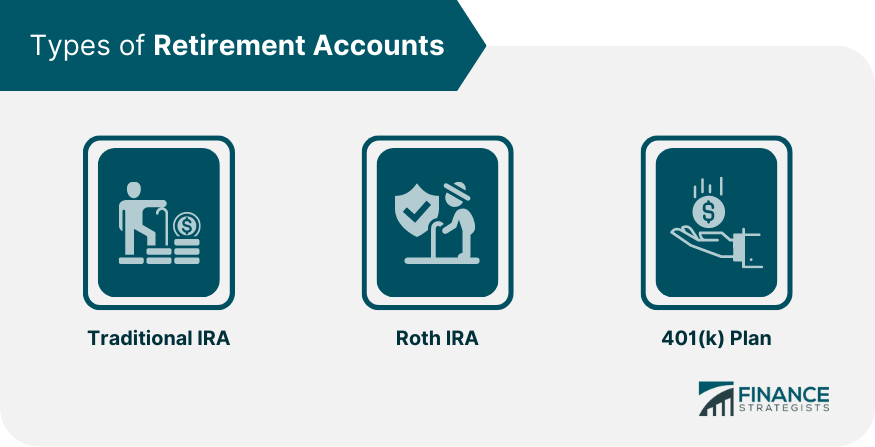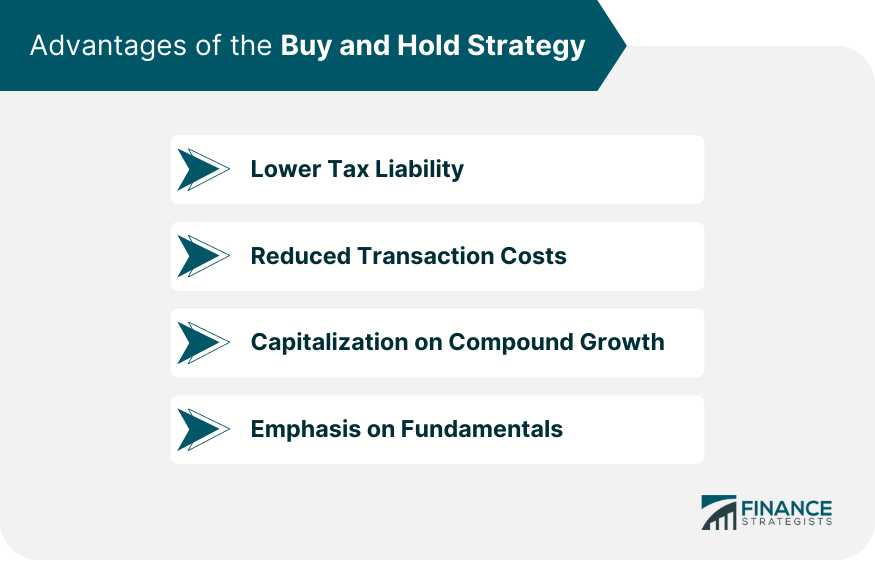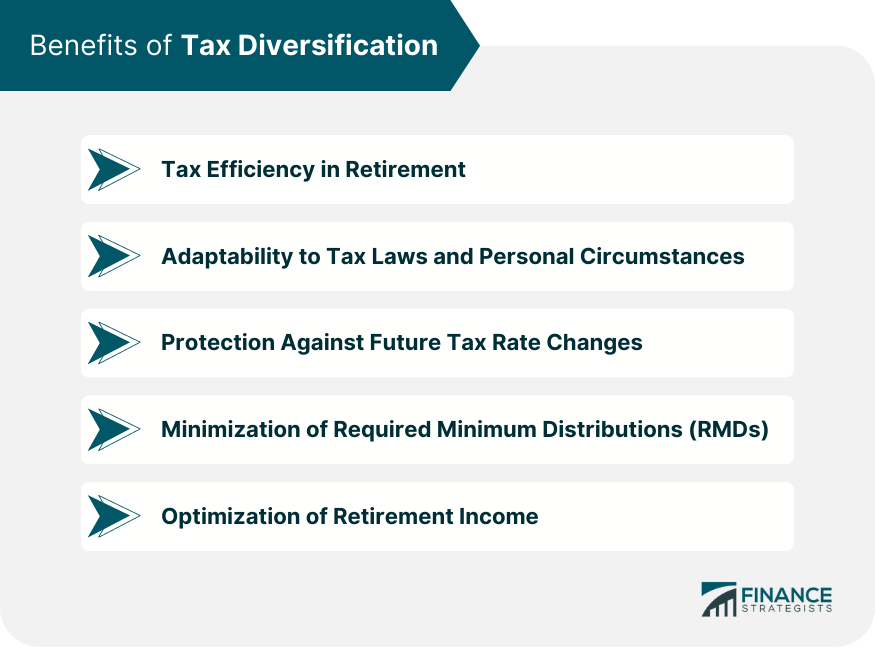Capital gains tax is a tax levied on the profit made from the sale of an investment or property. These gains are classified as either short-term or long-term. Short-term capital gains arise from assets held for a year or less and are subject to regular income tax rates. This often results in higher tax liabilities. Long-term capital gains, on the other hand, stem from assets held for more than a year. The tax rates for long-term gains are significantly lower, typically ranging from 0% to 20%, contingent on your income level. Strategic planning around the timing and holding period of investments can help optimize tax implications and enhance overall financial outcomes. Investors should be mindful of these tax nuances to make informed decisions and potentially minimize tax burdens on their investment returns.
Retirement accounts are specialized financial vehicles that facilitate individuals' savings and investments for retirement. These accounts offer compelling tax advantages, motivating long-term financial planning. Various retirement accounts are available, such as Individual Retirement Accounts (IRA), Roth IRAs, and 401(k) plans. The tax benefits they provide can be in the form of tax-free growth, tax-deductible contributions, or tax-free withdrawals, tailored to the specific type of account. These accounts play a pivotal role in securing a financially stable and comfortable retirement, making it essential for individuals to understand their unique features and choose wisely based on their financial goals and tax strategies. Proper utilization of retirement accounts empowers individuals to build a robust nest egg for their golden years. Different retirement accounts have varying tax structures that could impact the application of capital gains tax. Retirement accounts offer a significant advantage in shielding investments from immediate capital gains tax. Within these accounts, transactions like buying and selling stocks or mutual funds remain tax-deferred, providing an opportunity for tax-free growth over time. However, it's crucial to note that tax implications come into play when you eventually withdraw funds from your retirement accounts. Withdrawals from traditional retirement accounts, such as Traditional IRAs and 401(k) plans, are generally subject to income tax at the prevailing tax rate during retirement. On the other hand, Roth IRAs offer a unique advantage: qualified withdrawals, including earnings, are entirely tax-free. This benefit makes Roth IRAs particularly appealing for those seeking to maximize tax efficiency during their retirement years. Retirement accounts exhibit distinct tax treatments when it comes to withdrawals, determined by the account type. Understanding these differences is essential for effective tax planning: Withdrawals from Traditional IRAs and 401(k) plans are treated as regular income during retirement. As a result, the funds withdrawn are subject to income tax at the prevailing tax rates. While these accounts offer tax-deferred growth, taxes are paid on distributions, potentially affecting retirement income. Roth IRAs present a contrasting advantage. Qualified withdrawals from Roth IRAs, including earnings, are typically tax-free. This means that retirees can access their investment gains without incurring income tax, significantly enhancing tax efficiency during retirement. A Traditional IRA offers tax-deductible contributions, allowing you to reduce your taxable income in the contribution year. However, during retirement, withdrawals are taxed as ordinary income, making it essential to consider your tax bracket at that time. This account provides upfront tax benefits but incurs taxes on distributions. In contrast, a Roth IRA requires contributions with after-tax income, providing no immediate tax deduction. However, the account grows tax-free over time, and qualified withdrawals, including earnings, are entirely tax-free during retirement. This account offers tax-free income and flexibility, making it attractive for those anticipating higher tax rates or desiring tax-free distributions in retirement. 401(k) plans are employer-sponsored retirement accounts. Like Traditional IRAs, contributions are typically pre-tax, lowering your current taxable income. The account's growth is tax-deferred until withdrawals, which are then taxed as ordinary income. Some employers may offer Roth 401(k) options, where contributions are post-tax, resembling the benefits of a Roth IRA. This allows employees to choose between tax-deferred growth (Traditional 401(k)) or tax-free distributions (Roth 401(k)) based on their tax preferences and financial goals. The 'Buy and Hold' strategy is a long-term investment approach where investors purchase assets such as stocks, mutual funds, or real estate with the intention of holding them for an extended period, typically more than a year. This strategy aims to capitalize on the benefits of long-term capital gains tax rates. When investors hold assets for over a year before selling them, any profits generated from the sale are classified as long-term capital gains. These gains are subject to lower tax rates than short-term capital gains, which are profits realized from assets held for a year or less. The tax rates for long-term capital gains can be 0%, 15%, or 20%, depending on the individual's income level. These rates are generally lower than the ordinary income tax rates applicable to short-term gains, which can be as high as the individual's top marginal tax rate. The 'Buy and Hold' strategy provides several advantages: By holding investments for the long term, investors can minimize their tax liability on capital gains, allowing them to keep more of their investment profits. Frequent buying and selling of assets can incur transaction costs such as brokerage fees. Adopting a buy and hold approach reduces these costs, contributing to higher overall returns. Long-term holding enables investors to benefit from the power of compound growth. As investment returns are reinvested and accumulate over time, the potential for wealth accumulation increases significantly. Buy and hold investors typically focus on the fundamentals of the assets they hold, rather than short-term market fluctuations. This approach fosters a long-term perspective and helps investors avoid making impulsive decisions based on short-term market movements. However, the buy and hold strategy may not be suitable for all investors or all types of assets. Market conditions, individual financial goals, and risk tolerance should be carefully considered when implementing this strategy. Tax diversification is a prudent and strategic approach to managing retirement savings by distributing investments across various types of retirement accounts. By doing so, individuals can potentially optimize their tax situation during retirement and exercise greater flexibility in managing their taxable income. The key benefits of tax diversification include: With tax diversification, retirees can choose from a mix of taxable and tax-advantaged accounts when withdrawing funds each year. By strategically balancing withdrawals from taxable accounts (e.g., brokerage accounts) and tax-advantaged accounts (e.g., Traditional IRAs, Roth IRAs, 401(k) plans), retirees can control their taxable income and minimize the overall tax burden in retirement. Tax laws and individual financial situations can change over time. Having a diverse array of retirement accounts offers adaptability to evolving tax regulations and personal tax circumstances. This allows retirees to respond effectively to changes in tax rates or income needs. Predicting future tax rates can be challenging. By holding various types of retirement accounts, individuals can hedge against potential future changes in tax rates. For example, if tax rates increase, having a portion of retirement savings in Roth IRAs, with tax-free withdrawals, can provide a valuable buffer against higher taxes. Diversifying retirement accounts can help in managing Required Minimum Distributions (RMDs) effectively. RMDs are mandatory withdrawals that individuals must take from Traditional IRAs and 401(k) plans after reaching a certain age. By spreading retirement savings across different account types, individuals may reduce the impact of RMDs on their taxable income and avoid potential penalties for not taking RMDs as required. With tax diversification, retirees can create a tax-efficient withdrawal strategy tailored to their specific financial needs. This allows them to strike a balance between meeting their lifestyle requirements and minimizing tax liabilities, ensuring a sustainable and comfortable retirement income. While tax diversification can offer significant benefits, it's essential to approach this strategy thoughtfully. Factors such as current and expected future tax brackets, retirement income needs, and investment objectives should be carefully assessed when deciding how to allocate retirement savings across different accounts. Capital gains tax is levied on profits from investments or property sales and is categorized as short-term (for assets held less than a year) or long-term (for assets held over a year). Retirement accounts such as IRAs, Roth IRAs, and 401(k) plans offer tax advantages, including tax-free growth, tax-deductible contributions, or tax-free withdrawals. Capital gains tax applies differently to these accounts. For example, transactions within retirement accounts are tax-deferred until funds are withdrawn. Traditional IRAs and 401(k) plan withdrawals are treated as regular income and are taxable, whereas Roth IRA withdrawals are tax-free. The 'Buy and Hold' strategy can reduce capital gains tax liabilities by encouraging long-term investment, thus qualifying for lower long-term capital gains tax rates. Tax diversification across different retirement accounts can improve tax efficiency during retirement, provide flexibility against tax law changes, and help manage Required Minimum Distributions.Capital Gains Tax and Retirement Accounts: Overview
What Is Capital Gains Tax?
What Are Retirement Accounts?
Capital Gains Tax and Its Role in Retirement Accounts
How Capital Gains Tax Applies to Retirement Accounts
Differences in Tax Treatment of Retirement Accounts
Traditional IRA and 401(k) Withdrawals
Roth IRA Withdrawals
Types of Retirement Accounts
Traditional IRA
Roth IRA
401(k) Plans

Strategies for Minimizing Capital Gains in Retirement Accounts
Utilizing Buy and Hold Strategy for Long-Term Capital Gains
Lower Tax Liability
Reduced Transaction Costs
Capitalization on Compound Growth
Emphasis on Fundamentals

Benefits of Tax-Diversification
Tax Efficiency in Retirement
Adaptability to Tax Laws and Personal Circumstances
Protection Against Future Tax Rate Changes
Minimization of Required Minimum Distributions (RMDs)
Optimization of Retirement Income

Conclusion
Capital Gains Taxes and Retirement Accounts FAQs
Capital gains taxes are levied on profits from investment or property sales. Retirement accounts can impact how these gains are taxed upon withdrawal.
In retirement accounts like Traditional IRAs and 401(k) plans, withdrawals are generally taxed as regular income. Roth IRAs offer tax-free qualified withdrawals.
Long-term capital gains in retirement accounts are subject to lower tax rates, potentially reducing the overall tax burden in retirement.
Tax diversification, distributing investments across various accounts, allows retirees to manage taxable income strategically and adapt to changing tax laws.
Utilizing the "Buy and Hold" approach for long-term investments can lead to lower tax liabilities on capital gains, benefiting retirement savings.











